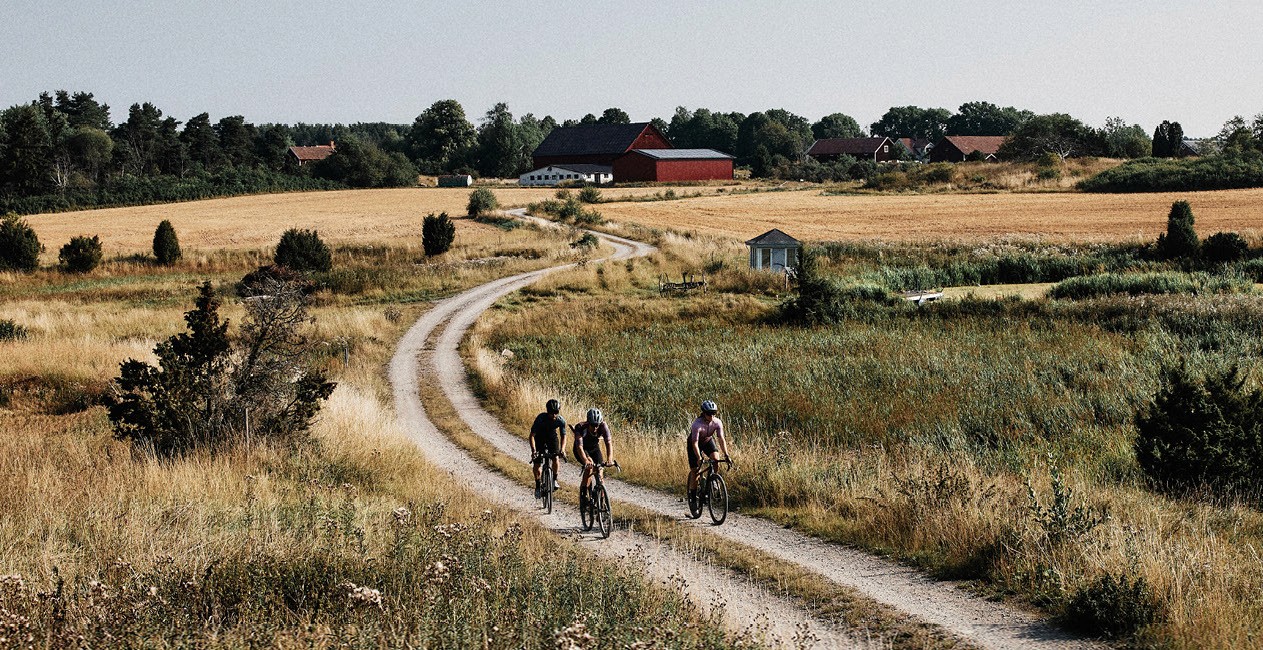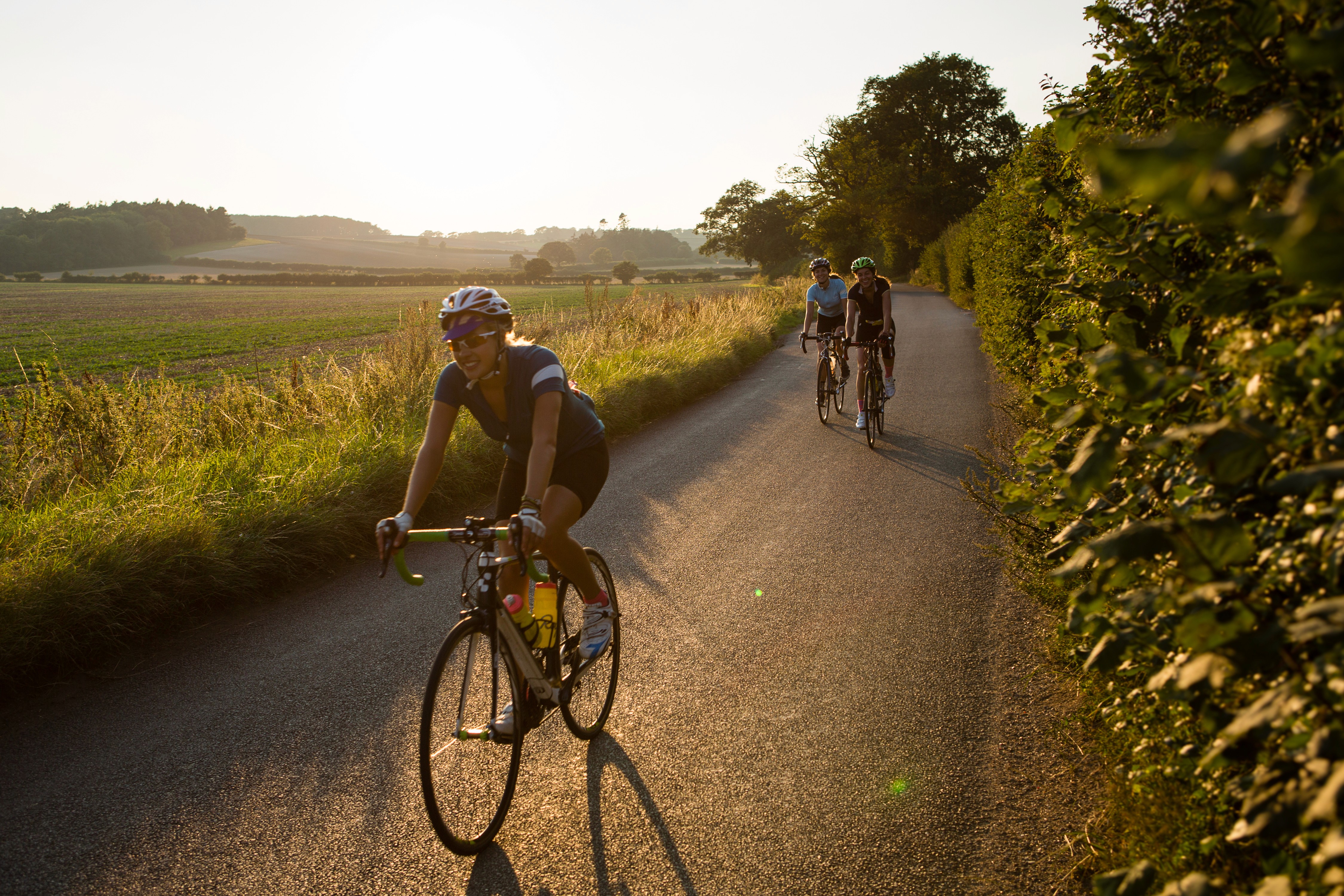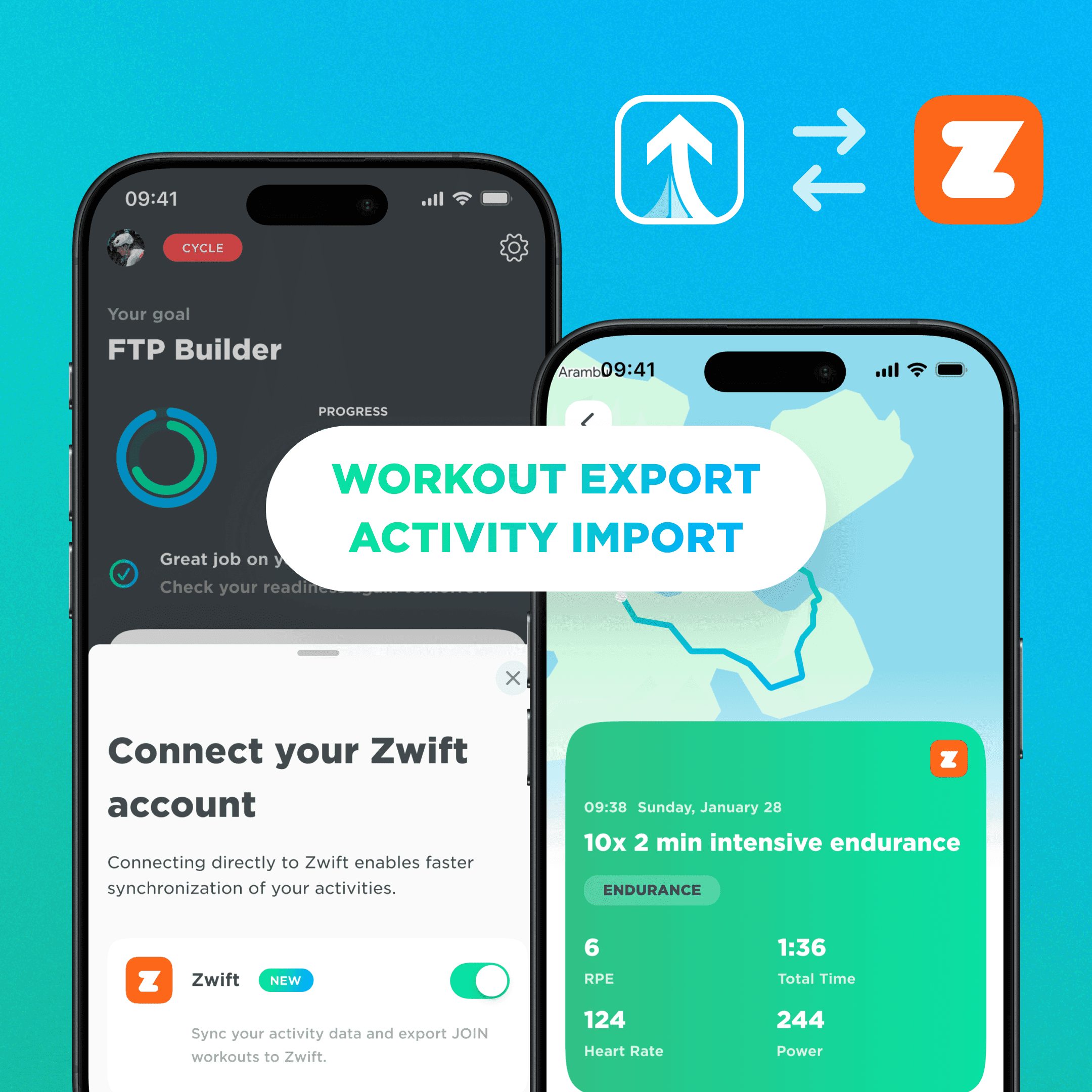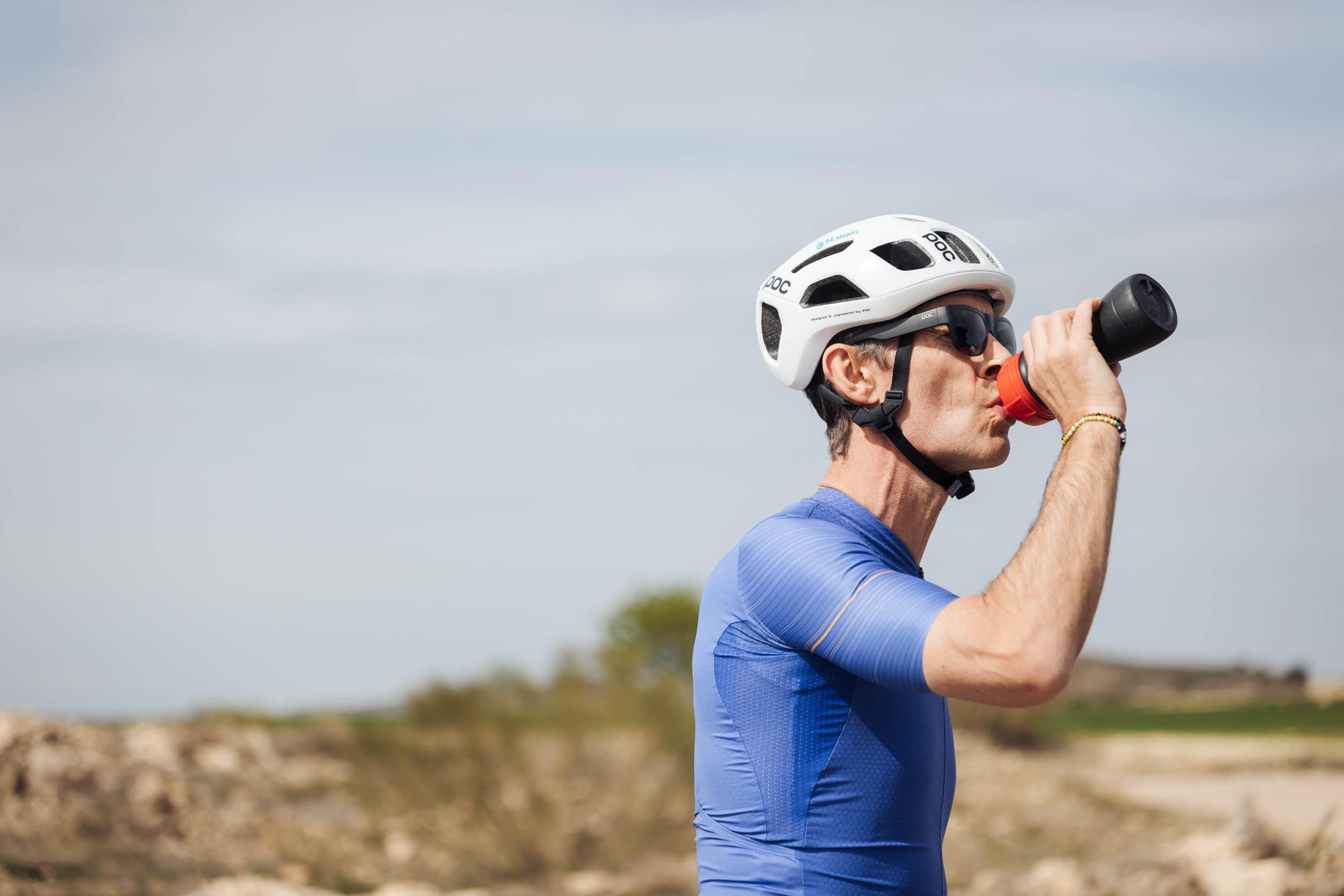7 golden tips for success at Rebound

May 12, 2023

7 golden tips for success at Rebound
May 12, 2023

7 golden tips for success at Rebound

May 12, 2023

So you’re about to embark on this adventure. Whether you go for a 100 or 200 mile diy gravel quest, you will probably be pushing some boundaries. Here are our 7 golden tips to make sure you have succes at Rebound and don’t hit a wall before your cycling computer says ‘route completed’.
The dos and don’ts for Rebound
Rebound tip 1
Make sure you’ve tested all your gear before you use it on D-day. Don’t start with brand-new tires, chains, cassettes or whatever, but make sure you’ve done at least an one hour (easy) spin the day before, so you know you can rely on it. The same goes for nutrition, hydration or even stuff like bibs, water bottles or camel bags. We understand it’s pretty daddy cool to show up in or with some brand-new shining gear, but it’s more important to get at that finish line.
Rebound tip 2
Be well rested. If you follow a training plan, which we hope you do on JOIN, follow the set taper period. Your form on the day is the outcome of condition minus fatigue. This taper will also ensure your carbohydrate storages in the liver and muscles are completely full, if of course you keep eating properly, with some extra carbs in run-up for Rebound.
Rebound tip 3
Keep your stops to a minimum. Actually, one of the rules of Rebound is to keep the rest stops to a maximum of 2, but an extra advice is to make those stops not too long. Eating and drinking can be easily done on the bike instead of off the bike. Some would argue this also goes for peeing, but we leave that up to you. If, for example, you peddle for 10 minutes at 15 km/h while eating, you still tick 2,5 km. If someone needs to close that gap while you speed up to 30 km/h he or she needs to ride half an hour at 35 km/h and that’s a big effort.
Rebound tip 4
This event might come across as a cycling event, while it’s actually an eating contest. The most limiting factor in your performance will likely be the amount of carbs you have left in your tank. You can empty the complete storage of approximately 600 grams within 60-90 minute of near threshold work and you can only replenish this with about 90 grams an hour. For this you need to eat a lot and you need to train this. Especially for really long rides this is the key in completing your challenge. The aim here is to start eating right from the get go preferably glucose and fructose in a 2:1 ratio.
Rebound tip 5
When you have your nutrition plan dialed in, it’s also about pacing. If the intensity is just too high for too long you can never match the demand by eating. So the solution is also to preserve carbs as much as possible. For this you need to ride at an intensity at which you mostly burn fat instead of carbs. In general for most of us mortals this is below 80-85% of your threshold power/threshold heart rate. All the road sections, downhill and tailwind try to aim at an intensity below this. That way you save carbs for a higher intensity uphill and on gravel sections.
Rebound tip 6
Hydrate with hypotonic or isotonic beverages instead of water. Research shows to your body can uptake hypotonic (some carbohydrates and electrolytes) and isotonic (around 20-30 grams per 500 ml bottle of carbs) better than and faster than plain water or hypertonic beverages. With hypertonic beverages it’s easier to reach 90 gram of carbs per hour, but you might end up dehydrated. Depending on the weather conditions try to drink 500 to 750 ml every hour.
Rebound tip 7
Celebrate your achievement! Do not only celebrate because it’s mandatory by Rebound, but because after every goal and journey towards it you need to take some time to reflect. Keep yourself off the bike for a couple of days and start thinking about your next challenge. This way you will not end up in a monotonous routine that can lead to overtraining and/or overtraining.So with these seven tips you should be ready almost ready to go, since we saved the best for last. For every big challenging goal you should need a plan. Not a plan that’s set in stone, but a plan that’s personal based on what you do and your availability and adaptive in case the circumstances change.
Don’t worry because we got your Rebound challenge covered with our polarized JOIN Cycling plans.
So you’re about to embark on this adventure. Whether you go for a 100 or 200 mile diy gravel quest, you will probably be pushing some boundaries. Here are our 7 golden tips to make sure you have succes at Rebound and don’t hit a wall before your cycling computer says ‘route completed’.
The dos and don’ts for Rebound
Rebound tip 1
Make sure you’ve tested all your gear before you use it on D-day. Don’t start with brand-new tires, chains, cassettes or whatever, but make sure you’ve done at least an one hour (easy) spin the day before, so you know you can rely on it. The same goes for nutrition, hydration or even stuff like bibs, water bottles or camel bags. We understand it’s pretty daddy cool to show up in or with some brand-new shining gear, but it’s more important to get at that finish line.
Rebound tip 2
Be well rested. If you follow a training plan, which we hope you do on JOIN, follow the set taper period. Your form on the day is the outcome of condition minus fatigue. This taper will also ensure your carbohydrate storages in the liver and muscles are completely full, if of course you keep eating properly, with some extra carbs in run-up for Rebound.
Rebound tip 3
Keep your stops to a minimum. Actually, one of the rules of Rebound is to keep the rest stops to a maximum of 2, but an extra advice is to make those stops not too long. Eating and drinking can be easily done on the bike instead of off the bike. Some would argue this also goes for peeing, but we leave that up to you. If, for example, you peddle for 10 minutes at 15 km/h while eating, you still tick 2,5 km. If someone needs to close that gap while you speed up to 30 km/h he or she needs to ride half an hour at 35 km/h and that’s a big effort.
Rebound tip 4
This event might come across as a cycling event, while it’s actually an eating contest. The most limiting factor in your performance will likely be the amount of carbs you have left in your tank. You can empty the complete storage of approximately 600 grams within 60-90 minute of near threshold work and you can only replenish this with about 90 grams an hour. For this you need to eat a lot and you need to train this. Especially for really long rides this is the key in completing your challenge. The aim here is to start eating right from the get go preferably glucose and fructose in a 2:1 ratio.
Rebound tip 5
When you have your nutrition plan dialed in, it’s also about pacing. If the intensity is just too high for too long you can never match the demand by eating. So the solution is also to preserve carbs as much as possible. For this you need to ride at an intensity at which you mostly burn fat instead of carbs. In general for most of us mortals this is below 80-85% of your threshold power/threshold heart rate. All the road sections, downhill and tailwind try to aim at an intensity below this. That way you save carbs for a higher intensity uphill and on gravel sections.
Rebound tip 6
Hydrate with hypotonic or isotonic beverages instead of water. Research shows to your body can uptake hypotonic (some carbohydrates and electrolytes) and isotonic (around 20-30 grams per 500 ml bottle of carbs) better than and faster than plain water or hypertonic beverages. With hypertonic beverages it’s easier to reach 90 gram of carbs per hour, but you might end up dehydrated. Depending on the weather conditions try to drink 500 to 750 ml every hour.
Rebound tip 7
Celebrate your achievement! Do not only celebrate because it’s mandatory by Rebound, but because after every goal and journey towards it you need to take some time to reflect. Keep yourself off the bike for a couple of days and start thinking about your next challenge. This way you will not end up in a monotonous routine that can lead to overtraining and/or overtraining.So with these seven tips you should be ready almost ready to go, since we saved the best for last. For every big challenging goal you should need a plan. Not a plan that’s set in stone, but a plan that’s personal based on what you do and your availability and adaptive in case the circumstances change.
Don’t worry because we got your Rebound challenge covered with our polarized JOIN Cycling plans.
So you’re about to embark on this adventure. Whether you go for a 100 or 200 mile diy gravel quest, you will probably be pushing some boundaries. Here are our 7 golden tips to make sure you have succes at Rebound and don’t hit a wall before your cycling computer says ‘route completed’.
The dos and don’ts for Rebound
Rebound tip 1
Make sure you’ve tested all your gear before you use it on D-day. Don’t start with brand-new tires, chains, cassettes or whatever, but make sure you’ve done at least an one hour (easy) spin the day before, so you know you can rely on it. The same goes for nutrition, hydration or even stuff like bibs, water bottles or camel bags. We understand it’s pretty daddy cool to show up in or with some brand-new shining gear, but it’s more important to get at that finish line.
Rebound tip 2
Be well rested. If you follow a training plan, which we hope you do on JOIN, follow the set taper period. Your form on the day is the outcome of condition minus fatigue. This taper will also ensure your carbohydrate storages in the liver and muscles are completely full, if of course you keep eating properly, with some extra carbs in run-up for Rebound.
Rebound tip 3
Keep your stops to a minimum. Actually, one of the rules of Rebound is to keep the rest stops to a maximum of 2, but an extra advice is to make those stops not too long. Eating and drinking can be easily done on the bike instead of off the bike. Some would argue this also goes for peeing, but we leave that up to you. If, for example, you peddle for 10 minutes at 15 km/h while eating, you still tick 2,5 km. If someone needs to close that gap while you speed up to 30 km/h he or she needs to ride half an hour at 35 km/h and that’s a big effort.
Rebound tip 4
This event might come across as a cycling event, while it’s actually an eating contest. The most limiting factor in your performance will likely be the amount of carbs you have left in your tank. You can empty the complete storage of approximately 600 grams within 60-90 minute of near threshold work and you can only replenish this with about 90 grams an hour. For this you need to eat a lot and you need to train this. Especially for really long rides this is the key in completing your challenge. The aim here is to start eating right from the get go preferably glucose and fructose in a 2:1 ratio.
Rebound tip 5
When you have your nutrition plan dialed in, it’s also about pacing. If the intensity is just too high for too long you can never match the demand by eating. So the solution is also to preserve carbs as much as possible. For this you need to ride at an intensity at which you mostly burn fat instead of carbs. In general for most of us mortals this is below 80-85% of your threshold power/threshold heart rate. All the road sections, downhill and tailwind try to aim at an intensity below this. That way you save carbs for a higher intensity uphill and on gravel sections.
Rebound tip 6
Hydrate with hypotonic or isotonic beverages instead of water. Research shows to your body can uptake hypotonic (some carbohydrates and electrolytes) and isotonic (around 20-30 grams per 500 ml bottle of carbs) better than and faster than plain water or hypertonic beverages. With hypertonic beverages it’s easier to reach 90 gram of carbs per hour, but you might end up dehydrated. Depending on the weather conditions try to drink 500 to 750 ml every hour.
Rebound tip 7
Celebrate your achievement! Do not only celebrate because it’s mandatory by Rebound, but because after every goal and journey towards it you need to take some time to reflect. Keep yourself off the bike for a couple of days and start thinking about your next challenge. This way you will not end up in a monotonous routine that can lead to overtraining and/or overtraining.So with these seven tips you should be ready almost ready to go, since we saved the best for last. For every big challenging goal you should need a plan. Not a plan that’s set in stone, but a plan that’s personal based on what you do and your availability and adaptive in case the circumstances change.
Don’t worry because we got your Rebound challenge covered with our polarized JOIN Cycling plans.
More Relevant Articles
Discover valuable training tips to enhance your cycling performance.
More Relevant Articles
Discover valuable training tips to enhance your cycling performance.
More Relevant Articles
Discover valuable training tips to enhance your cycling performance.

Unlock Your Cycling Potential Today
Join thousands of cyclists who have improved their performance with JOIN's training plans.
Probeer het nu
Meer Informatie

Unlock Your Cycling Potential Today
Join thousands of cyclists who have improved their performance with JOIN's training plans.
By joining, you agree to our Terms and Conditions and our Privacy Policy.

Unlock Your Cycling Potential Today
Join thousands of cyclists who have improved their performance with JOIN's training plans.
By joining, you agree to our Terms and Conditions and our Privacy Policy.
Join Now
Join Now



